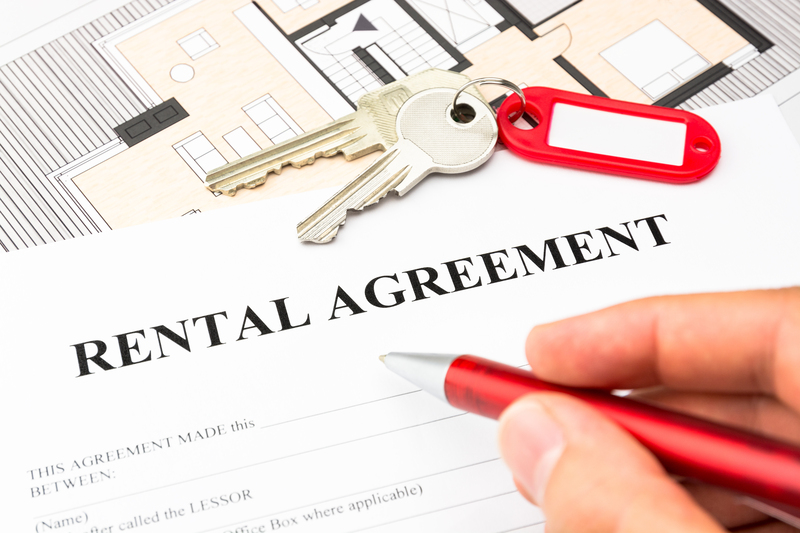Piano Moving Insights: Why It's Not a DIY Job
Posted on 18/06/2025
Piano Moving Insights: Why It's Not a DIY Job
Moving a piano may sound as simple as shifting furniture, but it is much more complex and risky. Many individuals consider taking on piano relocation themselves, driven by the desire to save money or avoid the hassle of hiring professionals. However, when it comes to piano moving, there are compelling reasons why it is not a safe or practical DIY endeavor. In this comprehensive guide, we'll unravel the intricacies of moving pianos, highlight the dangers of attempting it yourself, and explain why enlisting professional piano movers is absolutely essential.

The Complexity of Piano Moving
The Sheer Size and Weight of Pianos
Pianos are among the heaviest, most awkward items you can attempt to move in a home or venue. An upright piano can weigh anywhere between 300 and 500 pounds, while grand pianos often exceed 1,000 pounds.
- Uprights: Bulky and tall, make awkward gripping and maneuvering difficult.
- Grand Pianos: Extremely heavy, with delicate legs and a sprawling shape.
Not only are they heavy, but pianos also have an uneven weight distribution, with most of their mass centered around the cast iron harp and soundboard. This imbalance makes lifting and moving a piano a dangerous task for amateurs.
The Fragility and Value of Pianos
Pianos are more than just heavy objects. They are intricate, finely tuned musical instruments made of delicate parts.
- Delicate components: Strings, keys, pedals, and action mechanisms can be easily damaged by impacts or jarring movement.
- Finish sensitivity: Scratches, dings, and chips are easy to inflict on the polished wood surfaces.
- Monetary investment: A quality piano can cost thousands or tens of thousands of dollars, with certain antiques or grand pianos holding significant value.
Piano moving without adequate expertise or equipment risks permanent damage to a cherished or expensive musical asset.
The Hidden Risks of DIY Piano Moving
Personal Injury Hazards
DIY piano moving isn't just risky for the instrument, but also for the people attempting to move it. Here's why:
- Back injuries: Lifting or carrying heavy objects without proper technique or assistance can easily lead to strains or long-term back damage.
- Hand, foot, or finger injuries: Pianos can slip or tip, trapping hands or feet underneath.
- Crush injuries: If a piano falls, it can cause severe, even life-threatening injuries.
- Trip and fall: Navigating stairs or tight doorways increases the risk of falling or dropping the instrument.
Professional piano movers have the training, experience, and equipment to minimize these risks.
Piano Damage Risk Factors
Besides personal injuries, an inexperienced move can easily result in:
- Cracked frames or soundboards
- Broken legs, pedals, or casters
- Misaligned or damaged keys and internal action
- Exterior scratches, dents, or water damage
These damages are often irreparable or very costly to fix, reducing your piano's value or functionality.
Property Damage
Moving a piano can put your home at risk as well:
- Scratched floors and walls
- Dented door frames or stairs
- Broken railings or banisters
These repairs can be expensive and time-consuming, far outweighing any savings from avoiding professional movers.
Equipment Deficiency
Proper piano transport requires specialized equipment:
- Piano dollies and skids
- Heavy-duty straps and blankets
- Cushioning materials and ramps
- Custom tools for leg and pedal removal
Without these, even the strongest, most organized DIY effort faces significant challenges and safety risks.
Why Professional Piano Movers Are the Safe Solution
Expertise in Piano Moving Techniques
Professional piano movers have extensive training in the specific techniques required to move all types of pianos safely and efficiently.
- Piano disassembly and reassembly: They know how to remove and protect parts like lids, pedals, and legs to reduce damage risk.
- Safe lifting and transportation: Movers employ multi-person crews and proven lifting protocols.
- Securing the instrument: Proper placement and strapping ensure the piano is stable during transit.
When moving a piano, experience is crucial. Professionals have handled all types of situations - narrow stairs, tight turns, high-rise buildings, and more - and can anticipate and solve problems as they arise.
Licensed and Insured Service
Reputable piano moving companies carry comprehensive insurance that covers both the item being moved and your property. In the unlikely event that something is damaged during transit, you are protected financially. DIY moving offers no such guarantee and may leave you liable for costly repairs or replacements.
Proper Equipment and Vehicles
From piano boards (or skids) to custom dollies and padding, piano movers bring specialized equipment perfectly suited to transporting delicate and heavy instruments. Moving vans and trucks are also fitted with ramps, tie-downs, and other features to ensure a smooth, bump-free ride for your precious cargo.
Time and Stress Savings
Attempting to move a piano yourself can turn a straightforward move into an all-day ordeal. Professionals work efficiently, minimizing your stress and freeing you up to focus on other aspects of your move. They streamline the process, providing peace of mind from start to finish.
The Step-By-Step of Professional Piano Moving
For those who have never observed a professional piano move, understanding the steps involved highlights why it's not a job for amateurs:
- Inspection and Planning: Movers assess the piano, entry/exit paths, and destination. They plan the best route and gather necessary resources.
- Preparation: The piano is cleaned, pedals/legs disconnected if necessary, and fragile areas are padded and wrapped.
- Lifting and Placement: Movers use a piano board/skid and lifting straps to carefully place the instrument on a dolly, keeping it level and stable during all movement.
- Navigation: The team maneuvers the piano down stairs, around tight turns, and through doorways using precise communication and careful coordination.
- Truck Loading: The piano is gently lifted into the moving truck, securely tied down, and protected against bumps or rapid movements.
- Unloading and Setup: At the destination, the move is carefully reversed, and the piano is set up and assembled in its new location.
For complex moves (such as up or down several flights of stairs, or through difficult urban areas), this process may involve cranes, lifts, or even street closures - tasks only trained pros should attempt.
Common Myths About DIY Piano Moving
- "I can move a piano with enough friends."
Without the right equipment and technique, more hands simply increases chaos, confusion, and potential for injury. - "If we go slow, nothing will get damaged."
Even small bumps, shifts, or tilts can cause catastrophic internal damage. - "We can rent a truck and strap it in."
Improper loading frequently leads to pianos tipping, sliding, or absorbing damaging vibrations during transit. - "I moved a couch, so I can move a piano."
Piano moving is many times more complex and risky than shifting standard furniture.
Piano Moving Techniques: The Professional Advantage
There are several strategies that professional piano movers use to ensure a safe, damage-free relocation:
- Balancing and Tilting: Moving a piano requires knowledge of balancing its weight to avoid tipping and shifting during turns or inclines.
- Disassembly of Sensitive Parts: Grand pianos typically must be partially disassembled; professionals can do this efficiently and correctly.
- Use of Stair Climbers and Cranes: For extremely difficult moves, specialized technology is employed to prevent human injury and facilitate the move.
- Climate and Humidity Control: Pianos can be sensitive to temperature and humidity. Movers act quickly and use climate-controlled trucks when necessary.
These techniques protect both the piano and the moving team throughout the process.

Choosing the Right Piano Moving Company
If you decide to trust the experts, here are tips for picking the best piano movers:
- Look for specialization: Not all moving companies are equipped or trained for piano moving. Seek those with specific experience.
- Read reviews and ask questions: Request testimonials, proof of insurance, and references.
- Get a written estimate: Professional companies offer transparent, up-front pricing and outline details of their service and coverage.
By choosing a reputable service, you safeguard your valuable instrument, your property, and your peace of mind.
Final Thoughts: Leave Piano Moving to the Professionals
Ultimately, attempted DIY piano moves rarely end well. The physical, financial, and emotional risks far outweigh the perceived savings. By hiring professional piano movers, you ensure:
- Your instrument arrives undamaged and ready to play
- Your home or venue is preserved and unscathed
- Your health and safety are prioritized
- You enjoy peace of mind on moving day
If you value your piano, your property, and your well-being, do not attempt a DIY piano relocation. Instead, invest in professional piano movers who understand the art and science of safe piano moving. Your beloved instrument - and your back - will thank you!
Ready to Move Your Piano? Contact the Experts Today!
For stress-free, damage-free, and truly professional piano moving services, always choose experienced movers with a proven track record. Don't risk your investment on a dangerous DIY attempt - trust your piano to the experts.









